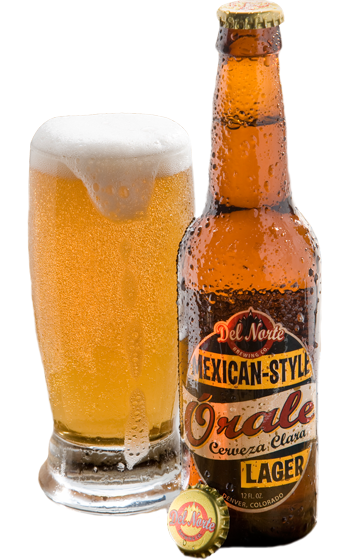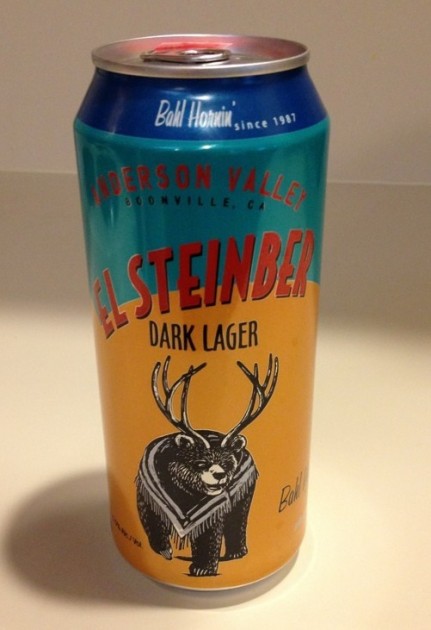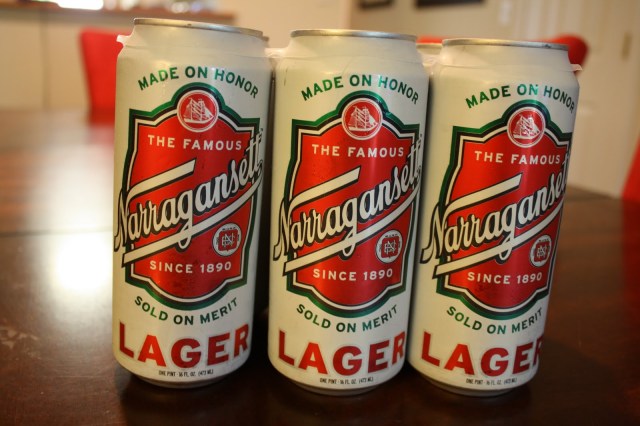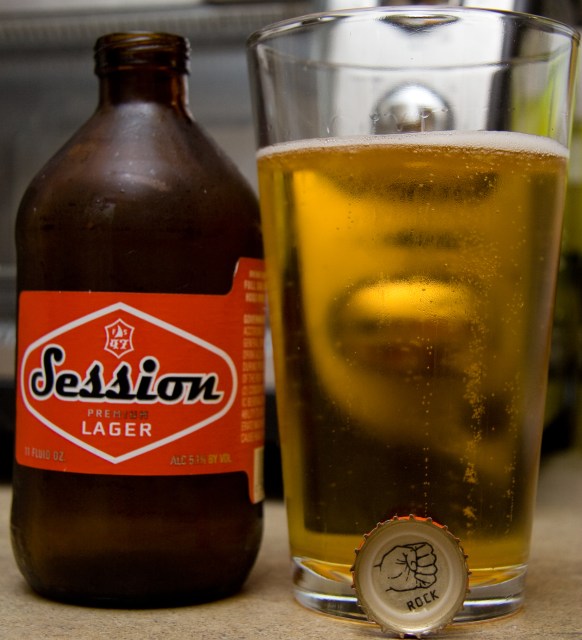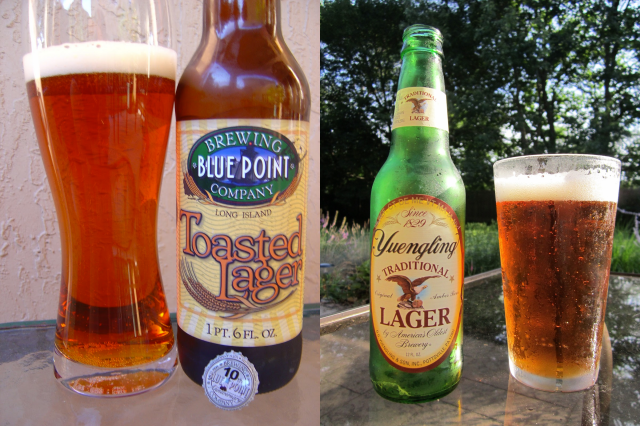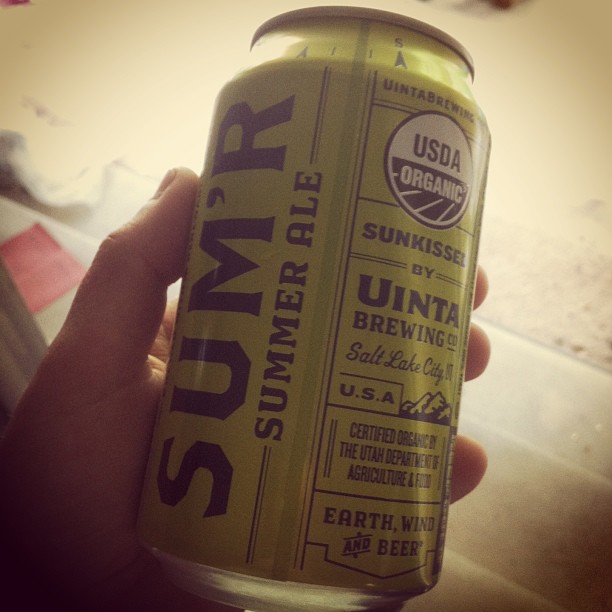A Modern Catalogue of Queer Slang
feature image via shutterstock
Coding has always been a rich part of queer history. From clothing, gesturing, imagery and language, it’s been a invaluable tool meant to protect, to acknowledge, and to navigate. Gay men in the US, and probably other places, all types of places even, have been “a friend of Dorothy,” since the ’30s (depending on who you ask), and while it’s often credited to The Wizard of Oz/Judy Garland’s gay following, it’s most likely referring to 1930s writer Dorothy Parker who was known to keep the company of (and sometimes marry!) gay men. But that’s what’s great about language, it’s ability to bend with time and adapt with each user.
Since we’ve already covered queer slang of the past on the site, I wanted to amass a modern catalogue of queer slang by sourcing the staff, personal friends, the comments, and you! Here’s what we’ve heard gay people called in our lifetimes.
Kayla, Staff Writer, NYC/LA
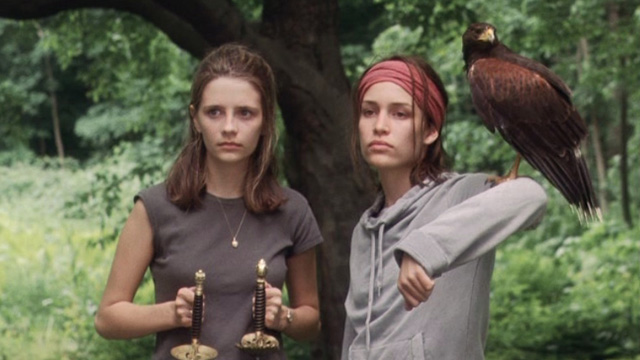
One of the best ever lesbian tv shows, Lost & Delirious.
Falcons – “It was a cool way of explaining them.”
Falcons, hawks, vultures, buzzards, shikras, kites, caracaras, hell, any bird of prey is going to sound cool and I’m fully on board. Thank you, Kayla, for the opening of this door.
Kayla
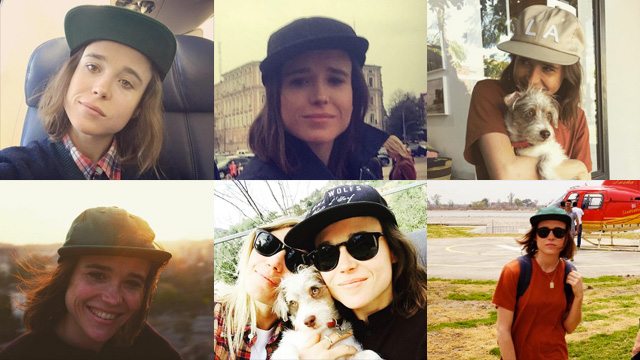
Exhibit A
“They wear a lot of hats.”
There’s not much I can add here.
Erin, Staff Writer, Tennessee
“They’ve got a wide sit.” or “They’ve got a hard sit.”
I don’t know when I first started saying this, but there’s a certain stance to me that undeniably pings. Let this young Jodie Foster show you what I mean.

image via youtube
The wing span, the leg span, the arm hang, the dropped shoulders, the foot out. Look, I don’t normally sit like this, but I know my body has morphed into this exact position in a primal moment. Jodie maintains this wide sit the entire interview, which makes the interviewer’s question of, “What kind of fellow are you into?” that much better.
Erin
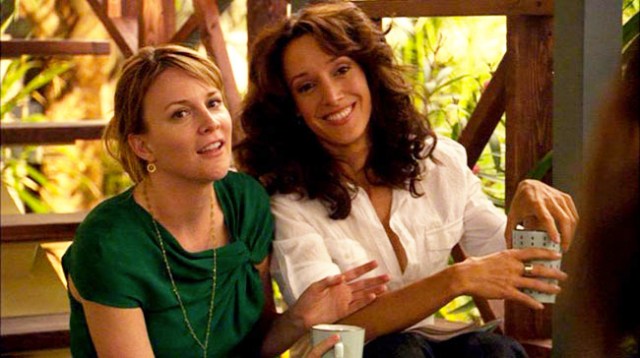
Editor’s note: Erin, I’m pretty sure your subconscious knew exactly what it was doing conjuring this name.
“They’re a friend of Bettina.”
This is not something I say. YET! I was just thinking we need to be a friend to our own Dorothy, and Bettina is a hilarious name.
Hat, Autostraddle member/commenter, North Yorkshire
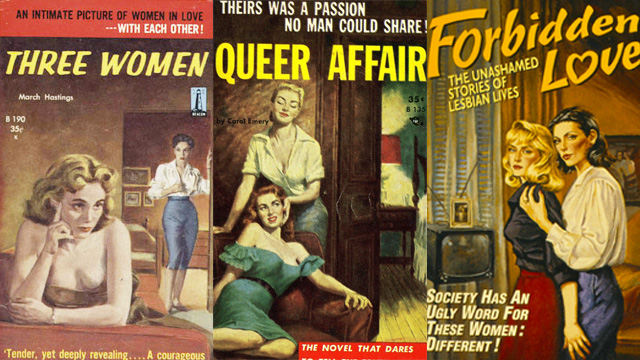
It’s always the women in Dungarees you’ve got to watch out for.
A Dungaree (4 or more lesbians) – “As far as I’m aware it originated with us one hazy night when myself, and 2 other lesbian housemates, had our girlfriends over. Our straight housemate wanted a collective noun. Have to wonder if anyone else has had the same thought in similar circs. We still use it on those shocking moments when in rural North Yorkshire we suddenly realise there’s a dungaree present.”
Okay, I love this so much. I remember reading “a dungaree” in Hat’s comment and it having such a good weight to it. If four lesbians constitutes a dungaree, then is A-Camp a rack?
Friends in North Carolina/South Carolina

#football
“They can throw a tight spiral.”
In college my friend and her friends on a rugby team introduced me to this phrase and I immediately fell in love with it. I still use it! It’s got such flare. Eventually it evolved into “Tony Romos” for shorthand because at the time Tony Romo was a popular American football quarterback (2006?), and also, yes, Romo rhymes with homo. Congratulations, everybody!
Friend who grew up in Atlanta, Georgia

#beaver
“They’re in the fur trade business.”
This one feels very sophisticated for someone to “grow up” using, but it has layers and I like it.
You
“????”
I know y’all have to have additions to this collection. I mean some of these are sort of to be expected, but the ones that are totally out of left field and still somehow make perfect sense have my changed my life. A tip of my many hats to you, falcon and dungaree. Due you have verbal cues among friends? Do you even care??
The Women’s Libation Movement: Oregon’s Full Sail Brewing Co. Makes An Actual Feminist Beer
Yes, not only does Oregon boast a relatively inexpensive housing market, scenic, bridge-laden landscapes and resident badass Carrie Brownstein, it’s also home to a plethora of world-renowned craft breweries. On top of it all, Hood River’s employee-owned Full Sail Brewing has recently elevated my Pacific-Northwest crush to a new level by publicly combining my two all-time favorite things ever: feminism and beer. Oh, Oregon! If you weren’t so dang rainy all the time, I swear I’d gay marry you.
Because they’re super awesome (did I mention they’re 100% worker-owned?), Full Sail has instituted a “Brewer’s Share” program: each staff member gets to brew and keg an experimental beer that they design and name themselves, even if they’re not a part of the regular brewing team. They also get to dedicate all the proceeds from their special limited edition to a charity of their choosing. This time around, Full Sail’s Marketing Coordinator Stephanie Duffy whipped up a Cascadian Dark Ale brewed with ample rich malts and aggressive hops and clocking in at 7.5% ABV and 82 IBUS (a measure of bitterness). With those flavor profiles, Duffy’s Counterpunch, as she’s calling it, is clearly made to give the average light lager or fruity Hefeweizen a kick in the pants.
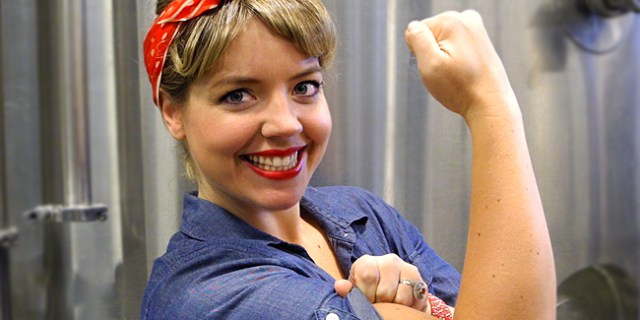
Stephanie Duffy (via fullsailbrewing.com)
“My beer defies the traditional expectations of a ‘girl’s beer.’ Like many women, I love my beer and I appreciate a broad cross-section of craft brews,” reports Duffy on a Full Sail press release. “Even though the beer industry is still very male-dominated (like so many other industries) I thought it was especially appropriate to brew a bold, strong beer in honor of all the bold, strong women who shirk stereotypes and avoid being pigeonholed. We’re in no need of pandering!”
Duffy considers her bold brew her feminist argument in liquid form. To seal the deal, she named my beloved radical rag Bitch Magazine as her charity recipient. Drinking delicious beer while also benefiting feminist media criticism? I think I’m in love.
Duffy was also quick to give props to her boss, Full Sail CEO and Founder Irene Firmat who established herself as a craft beer badass back in 1987, when the industry was virtually devoid of women, let alone publicly politically minded ones. To stand up and say you’re a feminist has never been an easy move, and I really admire these women for putting it all out there while simultaneously making some killer beers.
“My hope is this beer will inspire further conversations about women’s rights, feminism, and equality, because those are incredibly important and pertinent topics for all of us,” Duffy concludes. “What better place to discuss the philosophies of our culture and world than in a public house over a pint?” My thoughts exactly. Cheers, Oregon, you irresistible beast!
Where to drink:
If you’re lucky enough to find yourself near the PDX area, grab a pint of the hops-tastic Duffy’s Counterpunch at Full Sail’s Brew Pub in Hood River or the Pilsner Room in Portland. If you’re stuck – like me – dreaming wistfully of Oregon’s bounty, try the easy drinking Full Sail Amber or the crisply hopped Full Sail IPA, and donate to Bitch the old-fashioned way.
Cheers Queers! My Revolution Craft Beer Style Now
In my last two Autostraddle articles, I introduced craft beer as the queer alternative to big name brands and followed up with a handful of substitution suggestions in an attempt to sway some of you Coors Light-loyalists out there. For this post, I’m bringing the revolution back home and exploring my personal connection to my beverage of choice: beloved beer.
My Root
The scene: 1987, suburban St. Louis, Missouri. I’m two years old, toddling around my family’s living room on a quiet evening while the TV news blares from the hulking corner set. My dad sits on the couch engrossed in a phone call, an ice-cold can of Miller Lite perched beside him. My mom reclines next to him, reading a magazine and my older brother is belly down on the carpet, smashing G.I. Joes together in some epic battle. Diaper-clad, I make my way over to the coffee table, grab the can between my stubby little hands, and in one fell swoop, dump the sudsy brew all over my head. The beer trickles down my face and into my mouth. I shake my head like a wet puppy, lapping up the drips and proclaiming in the loudest voice my baby lungs can muster, “MMMM! BEER!”
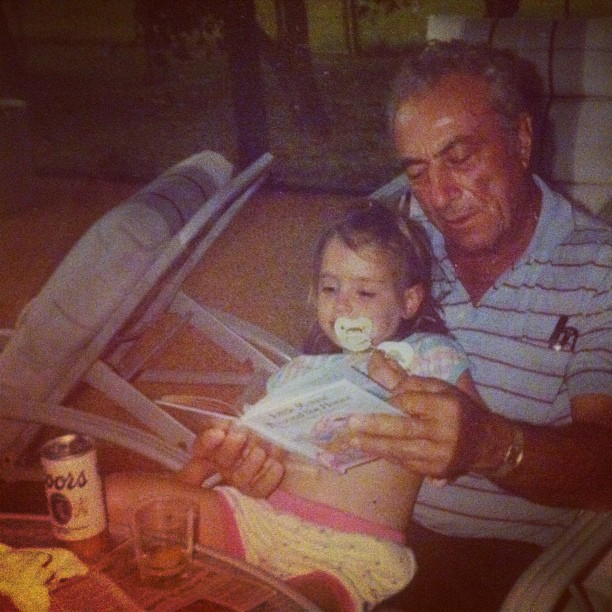
root, exhibit A
Needless to say, my parents had about four heart attacks that afternoon. The six-packs in the fridge moved up a shelf and my brother had an excellent story to bring back to his 4th grade class that next morning. Aside from the occasional (and heavily monitored) sip from an adult relative’s cup, it would be many years before I could fully express my love for beer. And when I could, I did.
The Coming Out Process
When I was in boarding school in rural Vermont, getting drunk was the name of the game. It didn’t matter what you were drinking or how you got it as long as it contained as much alcohol as possible. As a sophomore, my roommates and I cooked up a bread-yeast-and-apple-cider concoction and stored it in re-used Gatorade bottles under our bed. We fell asleep to the hissing symphony of fermentation every night for two weeks and when the hard cider was finally ready for tasting, we had to water down the vile swill with orange juice just to cover up its pungent odor. Judging from what I (don’t) remember, that initial homebrew attempt must have clocked in around 10% ABV. It was horrendous, but we drank it happily. And in big gulps.
During my senior year, I acquired a fake ID while visiting my then-girlfriend in California and brought it back to Vermont with me tucked deep into my wallet. At first, I indulged my friends and faithfully purchased their 30 racks of Bud and handles of cheap vodka, toting them to off-campus bonfire parties and secret late-night cocktail hours. This new access brought me choice, however, and I knew there had to something better out there. My research delivered me to the door of McNeil’s Brewery in downtown Brattleboro. After nervously ducking into the dark pub and attempting to talk shop with the bearded, barely-21-year-old bartender, I selected four 22oz bottles of craft beer and presented my fake ID for his review. He briefly glanced at it, smiled and packaged up the bottles, happy enough just to turn someone on to the art of craft beer.
Those four bottles, ranging in style from Belgian to IPA to a rich coffee stout, blew my mind. When I eagerly brought them back to school to share my newfound passion with my friends, though, they were less than enthused. Some of them had heard of McNeil’s (the owner’s daughter, Taylor, was a year above us) but none of them had yet ventured into the dusty brewpub. And when all you care about is getting wasted, there are about a million more economical and efficient ways to do that than enjoying a delicately spiced Belgian wit. When you’re a teenager, it’s almost impossible not to worry about what your peers think. This was different, though, and I vowed to wave my freak flag high. If they didn’t like it, well, more for me. Four years after coming out as queer, I had officially come out as a craft beer fanatic.
Out & Proud
After high school, I began traveling extensively, which only enhanced my interest in craft beer. Each new region brought with it new breweries to visit and new beer styles to sample. I’ve been to all fifty states and several continents and the older I get, the more I come to value the differences between local cultures. When I visit a place, I don’t want to eat at a chain restaurant or drink a Starbucks coffee – I want to find the little sandwich shop off the beaten path, run by four generations of town residents. Beer has always acted as my guiding star, leading to me from nondescript office park breweries to country gay bars to homebrewing punk houses throughout the nation. Wherever I’ve found people enjoying craft beer, I’ve found community.
After being taken by their Festina Peche peach Berlinerwiess early on, I made the trip down to craft legend Dogfish Head’s Milton, Delaware production facility where those goofballs crank out tens of thousands of barrels of 60 Minute IPA a year while also managing to take on wacky projects like erecting a Steampunk Treehouse in their front yard. When I lived in California, I drove up to hop-heavy Lagunitas on the regular to enjoy their upstairs “tasting loft” — a glorified office designed to fit the aesthetic of a stoned teenage boy from the 1970s, shag carpet and all. Craft can pioneer Oskar Blues was a super welcome sight after a long and ill-advised road trip with my Mom (pictured below), and their Southern-themed Colorado brewpub cooked up some mean fried green tomatoes. My curiosity and Yelp-savvy have lead me into plenty of smaller outlets, too — countless dusty, sidestreet brewpubs where the grumpy locals peer down at my from their worn pint glasses while I saddle up to the bar with all my tourist enthusiasm. Wherever I’ve found people enjoying craft beer, though, I’ve found community, no matter how strange it seemed.
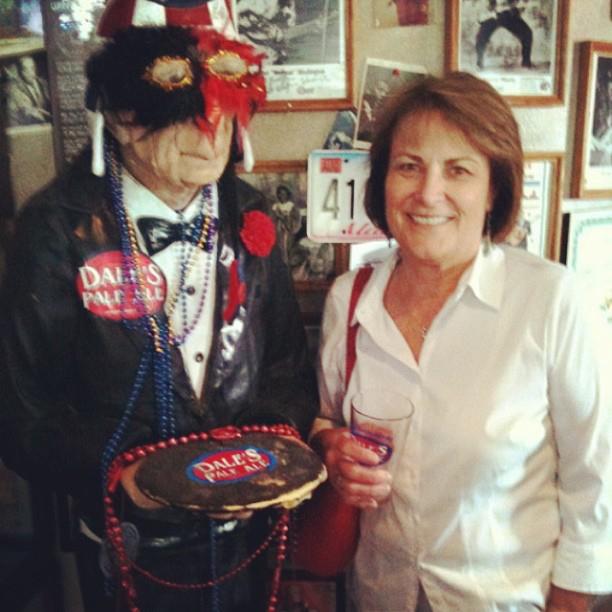
my mom at Oskar Blues
But it hasn’t always been kegs and rainbows. When I’m on a craft beer mission, whether it’s a trip to a pioneering Northern California brewery or a night out at a New York City beer bar, I’m generally the only girl and almost always the lone queer. When a 2012 Gallup poll reported that women between the ages of 18 and 34 now prefer beer to wine, reactions on BeerAdvocate’s online forum were anything but community-minded. “So they must be calling Blue Moon a craft beer?” mocks GuzzlLah of Illinois, referring to MillerCoors’ watery Belgian wheat. “Tryin’ to impress the dudes!” asserted Missouri’s Jake1605.
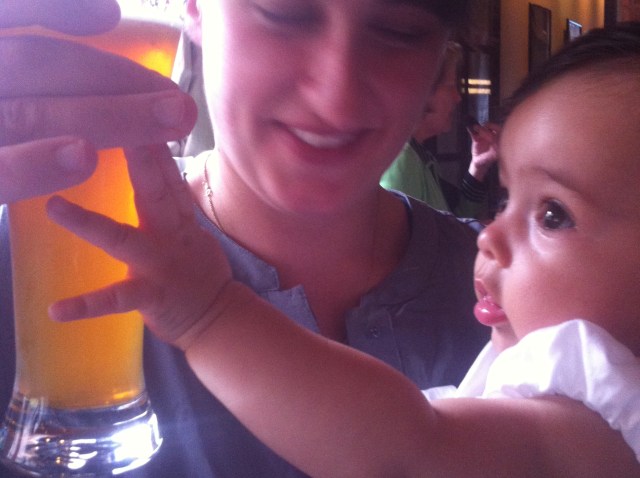
craft beer: the next generation
Despite the bull-headed animosity, my bartender friends assure me that the craft beer scene is changing and that more and more women are getting interested in craft beer, outshining their (male) counterparts in their willingness to try the newest and wackiest beer styles. I recently read about a gay bar in Jersey City that shifted its tap line from a Miller dominated outfit to a dozen or so craft offerings and the response was overwhelmingly positive. Organizations like the Pink Boots Society are raising funds to send female brewers to industry conferences and training programs. This year, Bell’s Brewery in Kalamazoo, Michigan brewed up a beer expressly for the Kalamazoo Pride Festival, calling the tart raspberry ale “Sparkleberry” and sponsoring the celebration. And super awesome websites like Autostraddle are giving us the space to talk about the wonders of being a craft beer weirdo.
While my own journey continues to barrel forward, I want to use this series to bring rad queers together over a shared passion for craft. Use the comments below to tell me your beer history, where your travels have taken you so far and why making the choice to drink craft is important to you. Cheers, queers!
A documentary filmmaker by trade and training, Meredith develops digital content for Homoground, a queer music podcast, and heads up the female-centric craft beer blog BeerdedLadies.com, amongst other more lucrative pursuits. Meredith is originally from St. Louis but now lives in Brooklyn where she can usually be found enjoying a cold one or playing softball in Prospect Park alongside her mutt, Miko.
Join me at SISTERS IN CRAFT, the first ever Ladies Pint Night at Atlantic Co. in Brooklyn! Check out the flyer for details and join our Facebook event to keep updated.
Cheers, Queers! The Craft Beer Decoder Will Help You Find a New Favorite
In my last post, I introduced all the political, cultural and community-driven reasons why this Bud’s not for you, queers. To recap: craft beer is resolutely where it’s at and choosing a craft brew over a can of PBR not only benefits your palate but also supports small business, slow food and the celebration of difference in a stiflingly homogeneous world. But what if you prefer the taste of Coors Banquet or Miller High Life? What if all you want out of your beer experience is a lime-topped Corona? Never fear – the craft beer decoder is here!
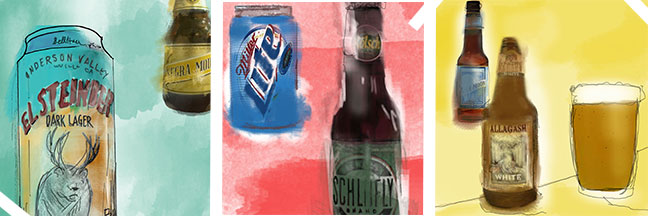
Graphic by Maggie Owsley
As a bartender in a craft beer bar, my favorite customers were always the skeptics. Afraid to step outside the sudsy boundaries of their comfort zones, they nervously scanned the 24-tap beer list, searching for a name they’d seen at the grocery store or on a billboard.
“What do you like?” I’d ask. The floodgates swing open: Heineken, Bud Light, Guinness, Stella. For each Big Beer brand that escaped their parched lips, I had a recommendation, pouring samples into shot glasses and sliding them across the bar with an encouraging, “Try this one!”
So, in an effort to pull you thirsty readers away from lining the pockets of conservative conglomerates, let me suggest some crafty alternatives to the brews you already know and love (or at least have gotten used to…).
If you like: Heineken
Then try: Oskar Blues Mama’s Little Yella Pils (NC)
Much like its import counterpart, Mama’s Little Yella Pils opens on the skunky side, with a pungent blast of sweet malt and crisp, grassy hops. The initial bite fades out quickly and that reassuring, familiar malt fills your palate. Miss the green bottle? Don’t. Beer is a lot like a vampire (the old kind, not the Twilight hunks) – its hoppy body is destroyed by sunlight. The element breaks down a beer’s chemistry, resulting in a sulphuric odor and taste. Luckily, Oskar Blues’ aluminum craft cans keep beer as fresh as the day it was brewed. And you can bring them to the beach! Bonus!
If you like: Corona/Pacifico
Then try: Del Norte Orale (CO)
Ah, the Mexican light lager. Ever wonder why Corona promotes shoving a slice of lime into your freshly opened longneck? Citrus has properties that neutralize the foul taste of sun-spoiled hops (see light anecdote above), so Corona can continue to package its brews in clear glass and steer clear of customer complaints. Avoid the sun poisoning altogether while beating the heat with a Del Norte Orale. It’s a remarkably smooth and easy drinking Mexican-style lager from the Wild West of Denver, sure to satisfy all your taco-pairing needs.
If you like: Negro Modelo/XX
Then try: Anderson Valley El Steinber Mexican Dark Lager (CA)
Sold in in tallboys or on tap, Anderson Valley’s El Steinber is a fantastic example of a big beer style gone craft – an adaptation that uses the general guidelines for structure but adds in some unique touches like a bit of coffee and some sweet grain. Roasty and nutty with a dry finish and a medium-light body, El Steinber perfectly compliments a warm, sunny afternoon.

via bkmag.com/flickr.com
If you like: Bud Light/Coors Light/Miller Lite
Then try: Captain Lawrence Captain’s Kolsch (NY) or Schlafly Kolsch by the Saint Louis Brewery (MO)
American light beer was modeled after a the German “Diat Pils,” a beer marketed towards diabetics in mid-century Eurpoe. The original recipe diminished carbohydrates by over-fermenting the beer. Ironically, though, the long fermentation process resulted in high alcohol levels and thus, more sugar and more calories. American breweries took that concept, added some adjuncts (or ingredients not used in traditional brewing, like rice and corn) and watered the whole mess down, then marketed to binge drinking Americans with slogans like “When you’re having more than one!” The marketing worked and now Bud Light is one of the top selling brands in the country. Opt for something different with an ice-cold Kolsch. This even-toned German style is light, crisp and much lower in ABV (alcohol content) than its hoppier craft brethren. Besides, you can feel better knowing that your “more than one” supports some rad independent businesses.
If you like: PBR
Then try: Narragansett Lager (RI)
This is a toughie – PBR is PBR and there’s not much else like it. Most of its value is social – its reputation rides on its appearance and the hipness we associate with it. Break away from the pack with a ‘Gansett! One of the last remaining independent regional breweries, Narraganasett tastes a lot like cheap beer and is priced accordingly. It also makes a killer base for boiling shellfish and the tall boys even feature a recipe on the back. Plus, it’s tagline is “The Official Beer of the Clam.” Just sayin’…
If you like: Schlitz/Lone Star
Then try: Full Sail Session Lager (OR)
Personally, I love a good Schlitz. The unfortunate thing here is that Pabst also loves Schlitz, so much so that it scooped it up along with a bunch of other tried and true regional breweries and consolidated into one large corporation. Oregon’s Full Sail Brewing Company, on the other hand, is 100% worker-owned, cranking out barrels since 1987. This refreshing all-malt, pre-Prohibition style lager is sure to satisfy your cold one craving and fits seamlessly into a shot-and-beer combo paring. They also come in adorable little stubby bottles.
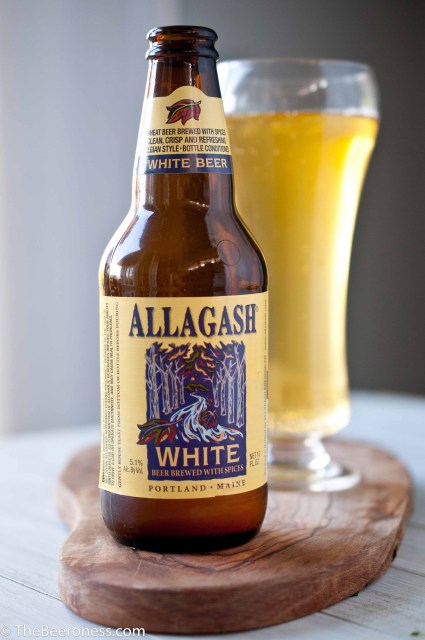
via thebeeroness.com
If you like: Blue Moon/Shock Top
Then try: Allagash White (ME)
In an effort to compete with the growing craft beer industry, Coors launched Blue Moon in 1995 and it quickly became one of the superbrewery’s top sellers. Anheuser-Busch saw Coors’ witbier attempt and released Shock Top, mimicking Blue Moon’s yeasty flavor profile and orange slice garnish. Both beers, however, pale in comparison to a pint of Allagash White. This citrusy wit pours a beautiful straw color and needs no added fruit to enhance its extremely well balanced, lemonade-like character.
If you like: Bud Heavy/Coors Banquet
Then try: Blue Point Toasted Lager (NY) or Yuengling Traditional Lager (PA)
Long Island’s Blue Point brewery puts out some fantastic beers, including their popular Toasted Lager. This solid, easy-drinking American Amber lager is the perfect pizza shop beer – not too heavy but with enough bisquity malt backbone to really bring that cheese-and-pepperoni slice to life. Yuengling is another great alternative to the King of Beers. As the oldest operating brewery in the country, this family-owned Pennsylvania outlet adheres to the “if it ain’t broke, don’t fix it” mentality. They’ve been churning out bottles of their refreshing, 4.4% ABV flagship American Lager on-and-off since before Prohibition, garnering such a reputation that simply ordering a “Lager” in almost any bar in Pennsylvania, Delaware or New Jersey will land you a pint of Yuengling.
If you like: Guinness
Then try: Brooklyn Brewery Irish Dry Stout (NY)
Brooklyn Brewery is another craft darling. Established in Williamsburg before Williamsburg was Williamsburg, owner Steve Hindy and brewmaster Garrett Oliver were pioneers in both the revitalization of New York City and the craft beer movement. Their Irish Dry Stout rivals Guinness in that famous creamy body and soft head, and far outweighs it in flavor profile, freshness and quality. You have to try a properly poured Brooklyn Stout to really get what I mean — I promise, you won’t be disappointed.
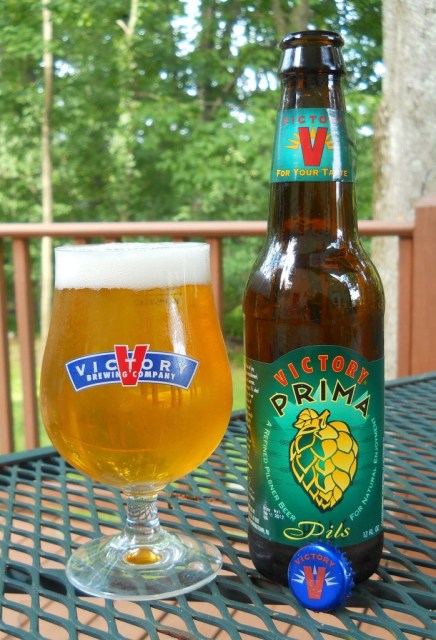
via bcgavel.com
If you like: Stella
Then try: Victory Prima Pils (PA)
At this point, Stella is really just a fancy Budweiser. Brewed by the same folks with the same ingredients, only a name and some high-cost marketing set the two apart. Victory Brewing Company, however, is no InBev (the corporation that owns Stella & Bud), and their Prima Pils is in a class of its own. Over the years, Victory’s team has developed a special relationship with the great brewmasters of Germany, ensuring access to the best German hops and the most innovative brewing techniques. The insanely fresh Prima Pils represents a beautiful friendship between the American palate and the German backbone and could kick Stella’s wimpy butt any day.
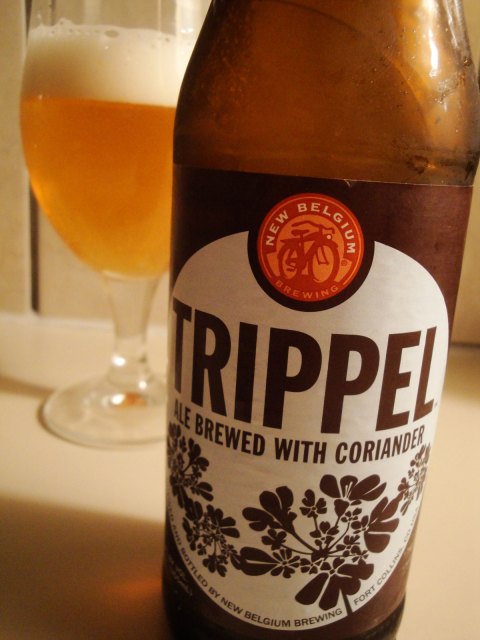
via lieblingsbier.de
If you like: Smirnoff Ice/Mike’s Hard
Try: New Belgium’s Trippel Belgian Style Ale (CO)
So many “non-beer drinkers” are turned off of beer because all they’ve experienced is the sudsy yellow sixpacks tossed around at college parties. Another world is possible, folks! If you prefer your alcohol to come dressed in sweet, try a Belgian ale like New Belgium’s Trippel. This SweetTart of a brew packs a punch full of fruity flavors that won’t leave you with that “bitter beer face.” Colorado’s New Belgium Brewery is also one of the only breweries presently owned and operated by a woman, so there’s that, too.
Cheers!
A documentary filmmaker by trade and training, Meredith develops digital content for Homoground, a queer music podcast, and heads up the female-centric craft beer blog BeerdedLadies.com, amongst other more lucrative pursuits. Meredith is originally from St. Louis but now lives in Brooklyn where she can usually be found enjoying a cold one or playing softball in Prospect Park alongside her mutt, Miko.
Cheers, Queers! Craft Brews Are the Queers of the Beer World
Feature Image via beerdedladies.com
When I set out to write a series on queers and craft beer, I was surprised by how little has actually been done on the subject. While the queer, and especially the queer girl, community might not be the first thing that comes to mind when one thinks about the macho, rugged boy’s club culture that has come to be synonymous with beer and brewing – think: know-it-all bearded fellows in flannel shirts, stirring bubbling buckets of homebrew in their man dens while their buddies shoot pool nearby – to me, it’s a natural pairing. And as a queer who spends at least 70% of my day thinking about, writing about, dreaming about or imbibing this delicious and fascinating beverage, I can’t wait to attempt to fill this journalistic and cultural void.
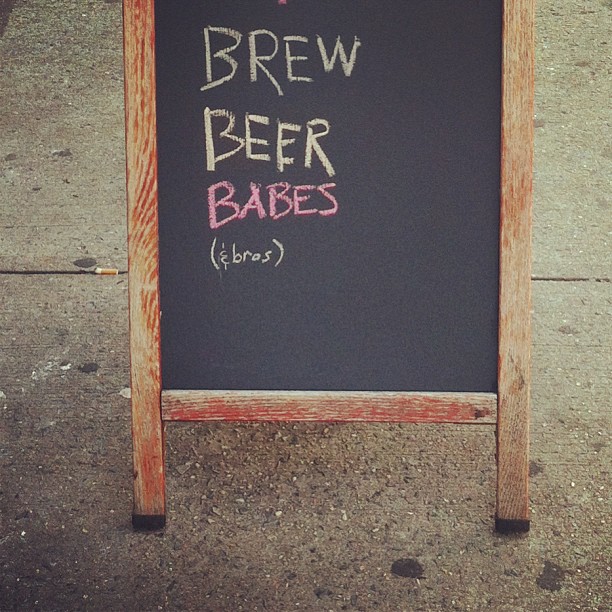
Lesbros
via beerdedladies.com
Despite its straight-white-male reputation, craft beer as an industry and movement is actually pretty damn queer. The business was founded on the principles of experimentation, improvisation, collaboration and working class ingenuity. The craft beer pioneers were dissatisfied with the mainstream telling them what to drink and trying to trick them with advertising so they ventured out on their own, inventing guides to homebrewing and transforming abandoned factories into breweries that cranked out frothy kegs shipped out for communal enjoyment amongst friends instead of pounding cans alone in front of the tube. The odds were against these early brewers: they had very little money and were competing tap for tap with multi-billion dollar titans of industry (over 90% of this fine country’s beer is produced by only two corporations…). But, just like us resilient queers, these folks survived on love, pride and an enduring devotion to community building.
My love for craft beer began in college, the same year I was introduced to the queer music scene. To me, the two worlds fit together perfectly – people unsatisfied with mainstream consumerism weren’t just sitting around, miserably swallowing the MTVs and the Coors Lites – they were taking a risk and producing their own ish, sharing their creative expression with their communities and encouraging likeminded folks to follow suit. I won’t even go into the political differences between big beer and the microbrews, but let’s just say it’s about as stark as between an Autostraddle reader and a Guns & Ammo devotee.
So, as gay pride parades sweep across the nation this month, be mindful of your local tea dance’s beer sponsor. Is that a Coors logo? A cherry red Budweiser label? Are the girls in the bikinis drinking dripping wet Coronas or are they pouring pitchers of Miller Lite down each other’s shirts? Don’t be fooled by the rainbow lanyards and free Bud Lite bottle openers – these corporations will happily take your hard earned cash and divert it to Focus on the Family. Drink smart, do your research and expand your palate. Think craft beer is just for rich snobs? Trade in your PBR for a crisp Narragansett tall boy or a bottle of Shiner Bock and feel good about where those two bucks went. Beer is a common drink and should be a celebrated as common drink by honoring the hardworking, independent brewers that produce it instead of a multibillion dollar industry full of automated canning lines and conservative funding.
Most of all, both queers and craft beers are about friends and community. Share a few cold ones with some friends and introduce them to beer that tastes amazing. Talk to other queers about what they’re drinking, pick up a book like Christina Perozzi and Hallie Beaune’s The Naked Pint or read a female-oriented beer blog like Beerded Ladies (ok, shameless plug). In my experience, being queer is all about demanding the right to be different, to resist the mainstream. Let’s embrace craft beer as a fellow comrade in the fight to be as weird and offbeat as we want to be. Cheers, queers!
A documentary filmmaker by trade and training, Meredith develops digital content for Homoground, a queer music podcast, and heads up the female-centric craft beer blog BeerdedLadies.com, amongst other more lucrative pursuits. Meredith is originally from St. Louis but now lives in Brooklyn where she can usually be found enjoying a cold one or playing softball in Prospect Park alongside her mutt, Miko.

